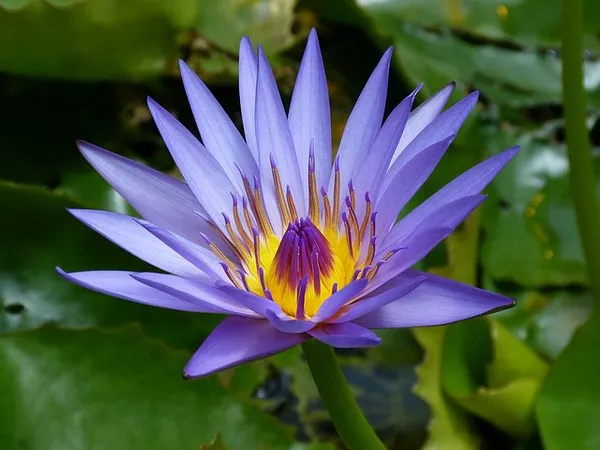Peace lilies (Spathiphyllum spp.) are cherished for their lush, dark green foliage and elegant white blooms. These beautiful indoor plants have gained popularity for their air-purifying qualities and aesthetic appeal. However, many peace lily owners face the challenge of getting their plants to flower consistently. In this comprehensive guide, we will explore the factors that influence peace lily flowering and provide tips on how to encourage these elegant plants to grace your living space with their delightful blooms.
Understanding Peace Lilies
Peace lilies are native to the tropical rainforests of Central and South America, and they thrive in low-light, humid environments. They are a popular choice for indoor plants because of their ability to purify the air by removing common indoor pollutants like ammonia, formaldehyde, and benzene. Additionally, their striking white flowers make them a welcome addition to any home.
The Peace Lily Blooming Process
The peace lily’s flowering process is closely tied to its natural habitat and environmental conditions. Understanding the plant’s natural cycle is crucial for encouraging it to bloom.
Maturity: Peace lilies typically start blooming when they reach maturity, which is usually around two to three years of age. Younger plants may not flower as frequently as mature ones.
Light Conditions: Light plays a pivotal role in peace lily flowering. These plants prefer bright, indirect light. Too much direct sunlight can scorch the leaves, while insufficient light can hinder flower development.
Temperature: Peace lilies thrive in a consistent temperature range between 65-80°F (18-27°C). Fluctuations outside this range can negatively affect blooming.
Humidity: Peace lilies appreciate higher humidity levels. Regular misting or using a humidity tray can help create the ideal conditions for flowering.
Soil and Watering: Well-draining potting mix is essential for peace lilies. They prefer to be kept evenly moist but not waterlogged. Overwatering can lead to root rot and inhibit blooming.
Fertilization: Feeding your peace lily with a balanced, water-soluble fertilizer during the growing season (spring and summer) can promote flowering. Be sure not to over-fertilize, as this can lead to nutrient imbalances and inhibit blooming.
Pot Size: Repotting your peace lily when it becomes root-bound can rejuvenate the plant and encourage blooming. Choose a slightly larger pot to allow room for root growth.
Pruning and Grooming
Pruning and grooming your peace lily can stimulate flower production. Here are some steps to follow:
Remove Dead or Yellow Leaves: Trim away any dead or yellowing leaves to maintain the plant’s overall health and appearance.
Trim Spent Flowers: After your peace lily blooms, trim the spent flowers back to the base of the stem. This not only improves the plant’s appearance but also directs energy towards producing new blooms.
Optimal Care for Peace Lily Flowering
To encourage your peace lily to bloom, follow these care tips:
Light: Provide your peace lily with bright, indirect light. Placing it near a north or east-facing window is ideal. Avoid direct sunlight, as it can scorch the leaves and inhibit flowering.
Temperature: Maintain a consistent temperature range of 65-80°F (18-27°C). Avoid exposing the plant to cold drafts or sudden temperature fluctuations.
Humidity: Boost humidity levels by misting the plant regularly or placing it on a humidity tray. In drier climates, consider using a room humidifier to provide the necessary moisture.
Watering: Water your peace lily when the top inch (2.5 cm) of the soil feels dry to the touch. Ensure that the pot has good drainage to prevent waterlogged roots, which can hinder flowering.
Fertilization: Feed your peace lily every 6-8 weeks during the growing season (spring and summer) with a balanced, water-soluble fertilizer. Reduce or eliminate fertilizer during the dormant period in the fall and winter.
Potting: Repot your peace lily when it becomes root-bound, typically every 2-3 years. Use a pot that is slightly larger in diameter to accommodate root growth.
Troubleshooting Non-Flowering Peace Lilies
If your peace lily still refuses to bloom despite providing optimal care, consider the following troubleshooting steps:
Age of the Plant: Younger peace lilies may not bloom as frequently as mature plants. Be patient, as they often take a few years to reach maturity and begin flowering regularly.
Insufficient Light: If your peace lily is not receiving enough light, it may not produce flowers. Try moving it to a brighter location with indirect sunlight.
Over-fertilization: Too much fertilizer can lead to excessive leaf growth at the expense of flowering. Reduce the frequency or amount of fertilizer you apply.
Temperature Fluctuations: Ensure that your peace lily is not exposed to temperature fluctuations, drafts, or extremely low temperatures.
Watering Issues: Overwatering or underwatering can hinder flowering. Ensure that you’re following a consistent watering schedule and that the pot has proper drainage.
Pest and Disease: Check for pests or signs of disease, which can stress the plant and reduce its ability to flower. Treat any issues promptly.
Conclusion
Peace lilies are stunning indoor plants that can thrive in a variety of conditions when properly cared for. Encouraging them to flower regularly is achievable by mimicking their natural habitat and paying attention to essential factors such as light, temperature, humidity, and watering.
By understanding the peace lily’s growth cycle and following the guidelines provided in this comprehensive guide, you can enjoy the elegant beauty of its white blooms as they grace your living space. With patience and diligent care, your peace lily will reward you with a continuous display of its delicate, soothing flowers.


